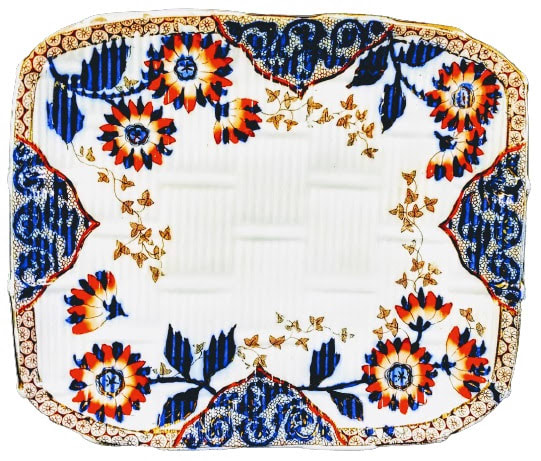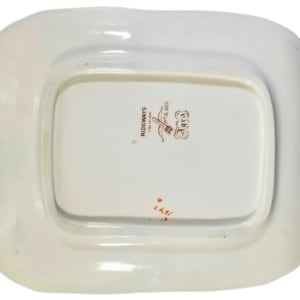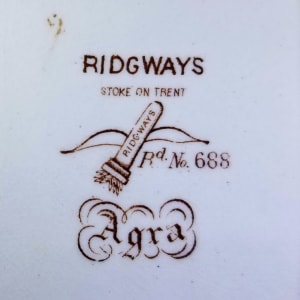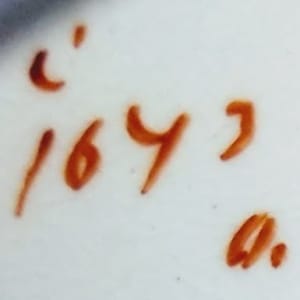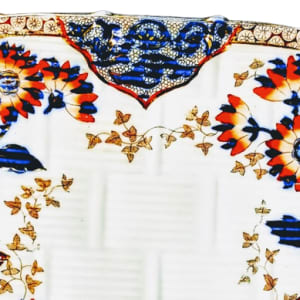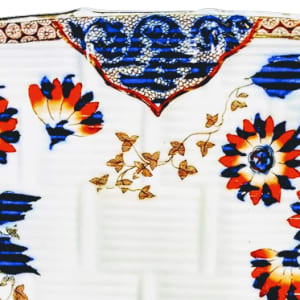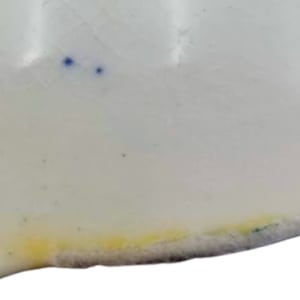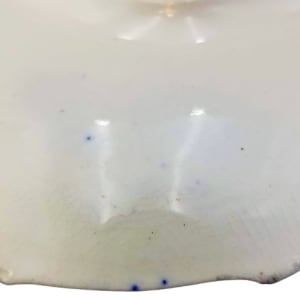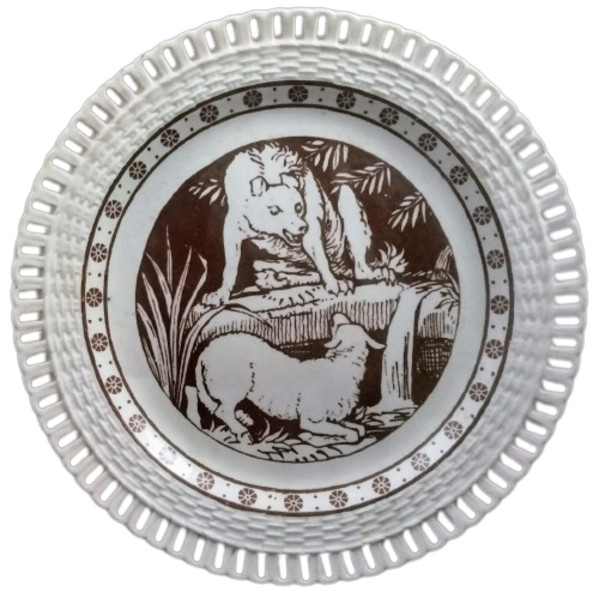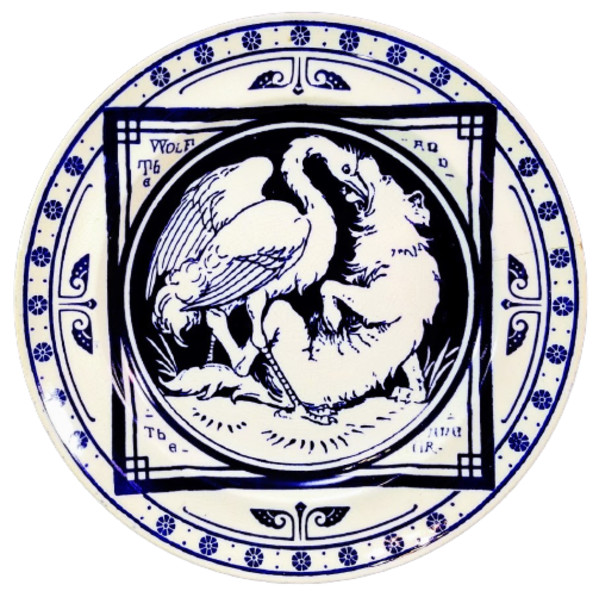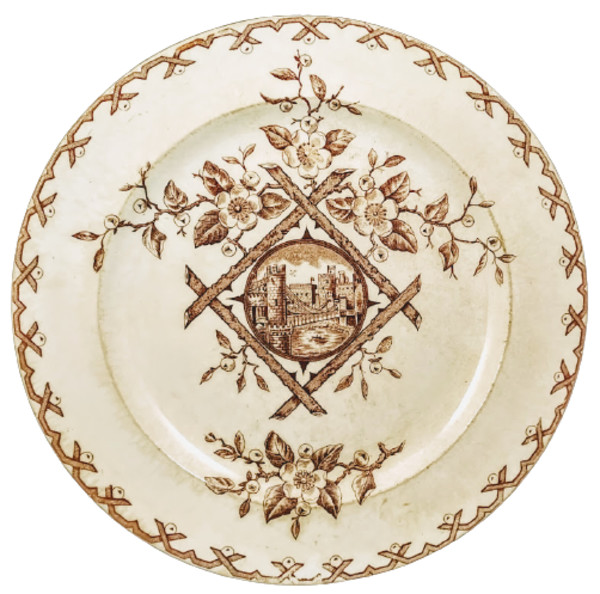Tray, 8.5 x 7.375. Brown transfer with polychrome hand enameling and gilding. The printed mark on the back gives the pattern name "Agra" and the maker, Ridgways, printed in the bow and quiver motif. The "Rd.No.688" is the 1884 date when the pattern was registered. It is in the alternate name as there are other border only patterns in the database with that number. An impressed 5/87 indicates the potting date of May 1887 for the tray, and the painted pattern mark is shown as C/1673. The pattern number probably refers to the colors used on the tray. A very thin border at the rim is printed in brown with repeated mon symbols. There is a brown pebble print under the shapes in the middle of each side that are over-painted with bright, dark blue. The flower groups in the corners are bright orange to yellow with dark blue over painted leaves and stems. A few tiny brown-printed leaf vines venture out from each side.
The Ridgway family was one of the important dynasties manufacturing Staffordshire pottery, with a large number of family members and business names, over a period from the 1790s to the late 20th century. In their heyday in the mid-19th century there were several different potteries run by different branches of the family. Most of their wares were earthenware, often of very high quality, but stoneware and bone china were also made. Many earlier pieces were unmarked and identifying them is difficult or impossible. Typically for Staffordshire, the various businesses, initially set up as partnerships, changed their official names rather frequently, and often used different trading names, so there are a variety of names that can be found. The various Ridgway companies made a huge range of wares, carefully following market demand. They can generally be described as serving the middle and upper parts of the market, avoiding the cheapest popular wares. As with other factories, a great amount of good quality earthenware was transfer-printed with heavily elaborate designs, mostly in a durable underglaze cobalt blue. Much of this went to the American market. From 1808, porcelain, that is to say bone china, was produced, in a great profusion of patterns, for which many of the pattern books survive. The styles are typical for the period, with many flowers, landscapes, and some modified Neoclassical and Chinoiserie treatments. Wedgwood jasperware effects were rendered in glazed porcelain. Much of the porcelain was also transfer-printed, or combined this and china painting by hand. In later periods, the many branches of the family businesses maintained a similar position in the market, and followed design trends at a rather safe distance.
- Subject Matter: Aesthetic (Floral & Botanical)
- Collections: Aesthetic Transferware
